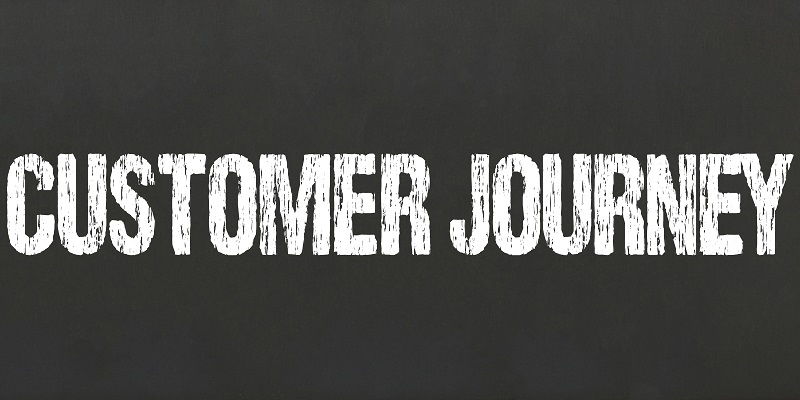In the rapidly evolving landscape of marketing, customer experience has become a critical differentiator for businesses. Delivering exceptional experiences across various touchpoints is essential to building meaningful connections and fostering loyalty. To achieve this, marketers need to embrace a holistic view of customer journeys, understanding the entire path a customer takes from the first interaction through conversion and beyond.
The Unlocking Power of Customer Journeys in Improving Customer Experience
The ability to focus on customer journeys is the great “unlock” for companies struggling with customer experience. Traditional marketing approaches often consist of isolated campaigns that fail to consider the entire customer journey. By shifting the focus towards understanding and optimizing the complete journey, businesses can uncover valuable insights and opportunities to enhance the overall customer experience.
The benefits of examining the entire customer journey
Looking at the whole customer journey provides organizations with a wealth of information and insights about the customer’s intent, behavior, and pain points. It allows marketers to identify the touchpoints that are most influential in shaping customer perceptions and decision-making. By analyzing each step of the journey, businesses can pinpoint areas of improvement and develop more targeted strategies to address customer needs and expectations.
The role of context and emotion in understanding customer wants
Bringing context and emotion together helps us understand and focus on what customers truly want. By delving deeper into customer journeys, marketers can grasp the wider context in which customers engage with their products or services. Understanding the emotional drivers behind customer actions allows businesses to create personalized experiences and tailor messaging that resonates on a deeper level, ultimately building stronger connections with customers.
The positive impact of customer journeys on customer advocacy and cost reduction
Customer journeys can bring about remarkable benefits for businesses. Studies have shown that improving customer journeys can increase customer advocacy by 20% to 40%. Satisfied customers tend to become enthusiastic advocates, spreading positive word-of-mouth and driving new business opportunities. Furthermore, optimizing the customer journey can also reduce costs by 15% to 25% as businesses minimize inefficiencies and allocate resources more effectively.
Utilizing Journey-Centricity for Customer Acquisition, Upselling, Cross-Selling, and Retention
Companies that adopt a journey-centric approach are better equipped to acquire new customers, upsell, cross-sell, and drive customer retention. By actively mapping and understanding the customer journey, marketers can identify critical touchpoints where they can engage customers and deliver tailored offers or messages that drive conversions. By proactively guiding customers through the journey, businesses can improve customer satisfaction, loyalty, and ultimately, long-term profitability.
Driving higher revenue through improved customer journeys
When customer journeys are improved, organizations can drive higher revenue. By optimizing each touchpoint, businesses can create seamless experiences that increase the likelihood of conversion and foster customer loyalty. Delighted customers are more likely to make repeat purchases, advocate for the brand, and even spend more per transaction. By constantly refining and optimizing the customer journey, businesses can unlock substantial revenue growth opportunities.
The limitations of traditional operating models in delivering great customer experiences
Traditional operating models are functional but not always designed to deliver great experiences to customers. Silos often exist within organizations, with different departments working independently and lacking a comprehensive view of the customer journey. This fragmented approach can hinder collaboration and result in inconsistent experiences for customers. To overcome these limitations, organizations must embrace a customer-centric mindset and transcend traditional boundaries.
Breaking down silos and looking at the whole customer journey for better experiences
To truly enhance customer experiences, organizations need to look at the whole customer journey and break down silos. By integrating data, insights, and processes across departments, businesses can create a unified and seamless customer experience. Collaboration and communication between teams enables a comprehensive understanding of customer needs and enables the delivery of exceptional experiences at every touchpoint.
Creating links and bridging silos within organizations to improve customer experiences
To deliver better experiences, we need to create links and bridge silos within our own organizations. Cross-functional collaboration is essential for a customer-centric approach. By aligning goals, sharing knowledge, and fostering a culture of collective ownership, businesses can break free from departmental constraints and truly focus on understanding and meeting customer needs at every juncture.
Marketers must grasp the importance of embracing the big picture and leveraging customer journeys to craft truly exceptional experiences. The ability to navigate the entire customer journey provides valuable insights into customer intent, behaviors, and emotional triggers. By optimizing each touchpoint, breaking down silos, and fostering a customer-centric culture, businesses can deliver experiences that not only delight customers but also drive revenue growth and strengthen brand loyalty in today’s competitive marketplace. Embracing journey-centricity is the key to unlocking immense potential and ensuring long-term success for any business.

